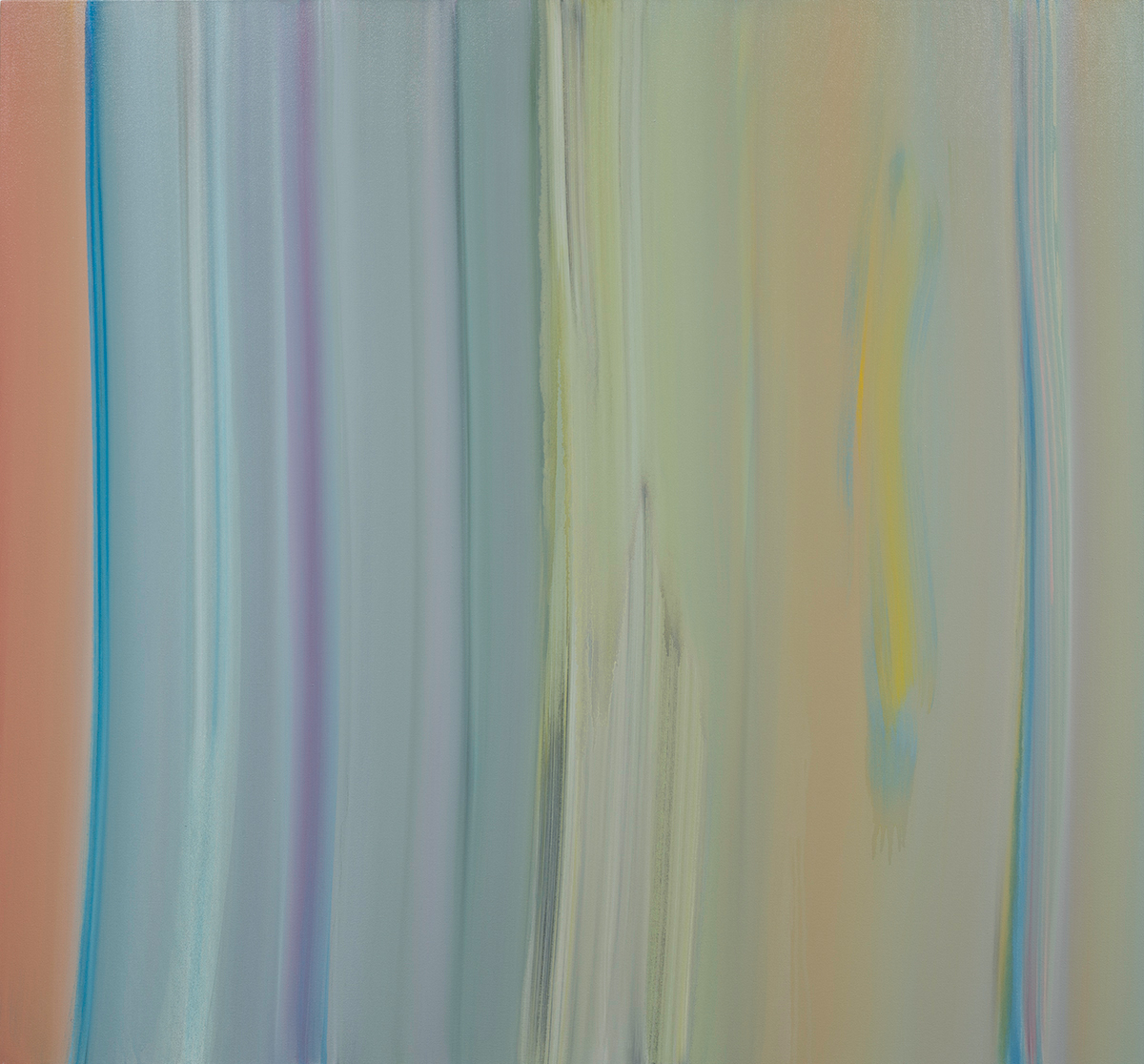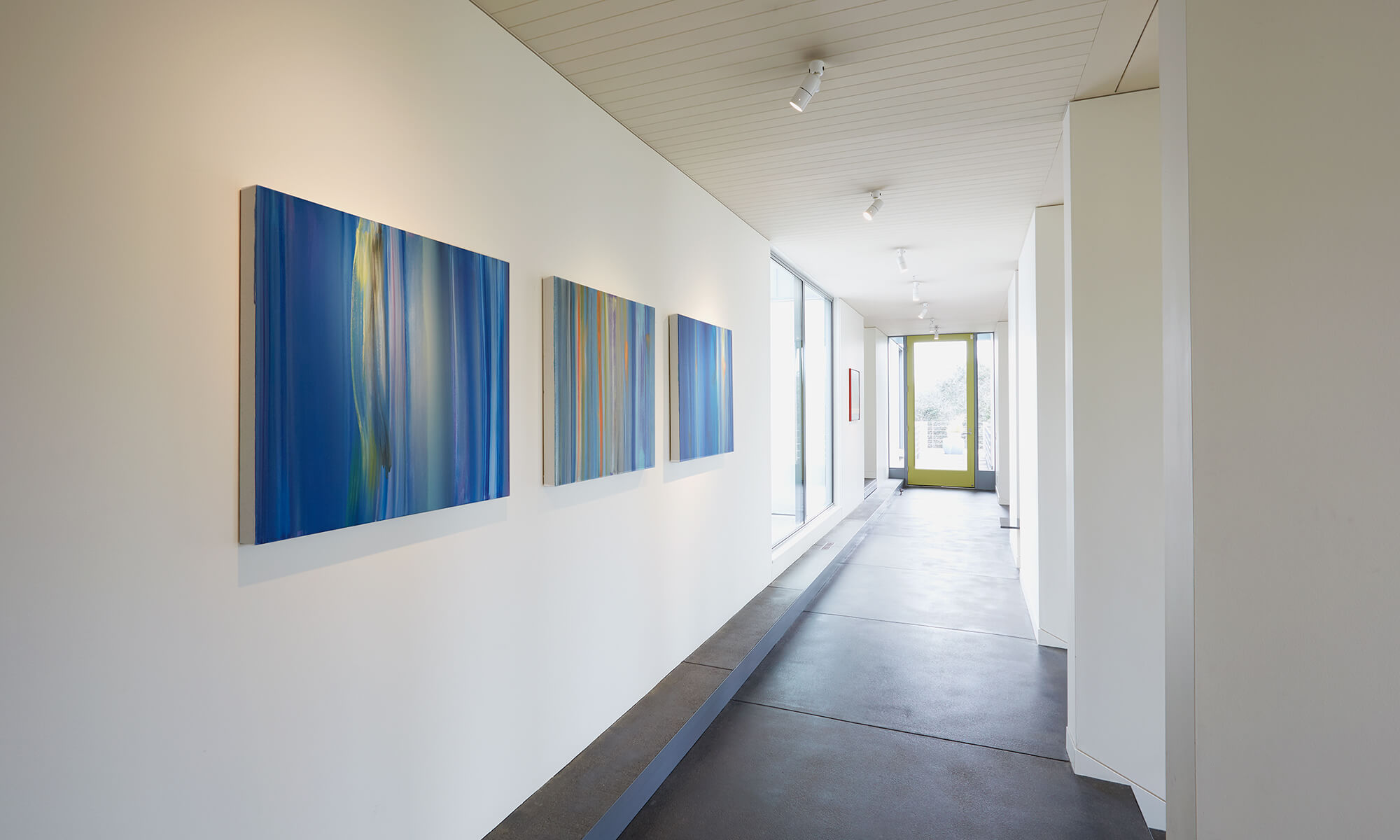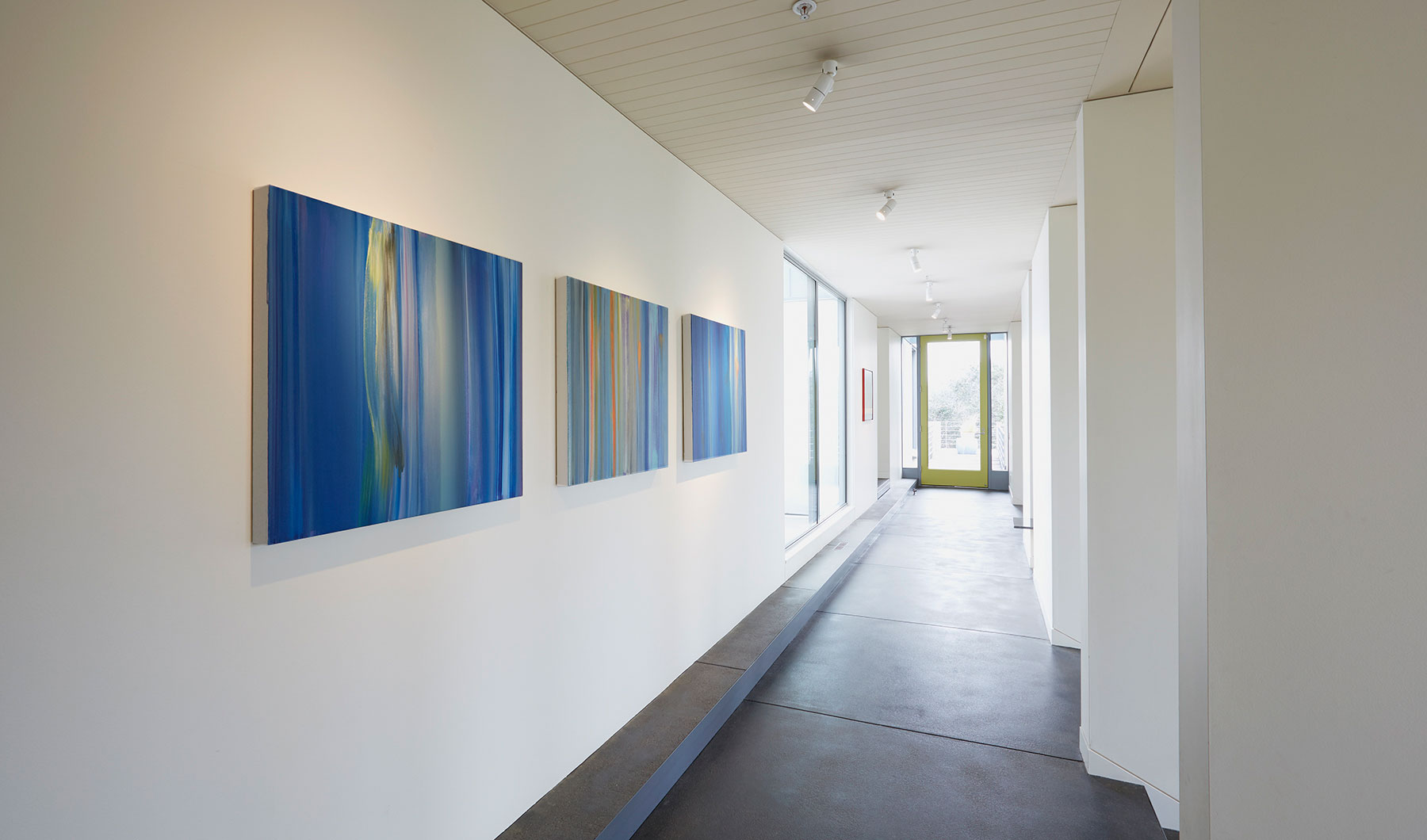Article originally appeared in Pyragraph
My 8 year old daughter asked me if I can paint anything other than stripes… and she has a good point. Brilliant minds that I respect in the art world have asked me the same thing. Yesterday, over breakfast, my family had a sketchbook out on the table and I drew a bagel. I exclaimed, “There! See, I can draw something!” We had a good laugh about it, but as the years go on, I continue to receive the same comments from friends and colleagues.
In order for an artist to make it to the 20 year mark, that person has got to have chutzpah, or a big ego, or both. It would otherwise be impossible to work tirelessly towards an obscure goal, against the interest of our mainstream culture, and against the interest of having a comfortable lifestyle.
At the age of 19, I called my mom from an ISD booth in India to let her know I did not take my flight back and was “never coming home”. I swam and drank from the Ganges, gave up my name and let everything float downstream. I found comfort in liminal space and in many ways got what I was looking for. After 6 months I’d stepped in water buffalo shit one too many times and succumbed to external notions that I had no social standing and no practical life experience. I didn’t want to be a drop-out.
I maintained a defiant stance stateside by studying art and tried my hand at being a hermit in Bastrop TX. Let’s just say I spent a good number of years building a wall between myself and cultural norms, before later being tamed by my wife, good friends, and banging my head against the wall. The point is, I spent many years building up my own way of going about things and defending it or ignoring feedback. This is the tough shell any artist needs to keep going.
In undergrad those “in the know” told me that I should study graphic design instead of painting. When I was working at an art supply store in Philly I was told by the store manager to start setting my eyes on more attainable goals like becoming a store manager. When I went to grad-school in Brooklyn in the late 90’s painting was considered dead. Those “in the know” were telling me to stop painting. I had become accustomed to not listening to advice by then.

I know painting cycles between dead and alive every few years, but I didn’t fully grasp that at the time. I just knew that when I visited the School of Visual Arts studios, a grad student, who was tying her shoes and other personal objects to her studio floor told me, “If you want to keep painting, don’t get an MFA here.” It reminded me of a zombie film where all the painting students became installation and video artists. “Get out, while you can,” was her warning. So I went to Pratt Institute instead, the only school where the painting studios were filled with painters. Brooklyn still had beautiful neighborhoods with boarded up crack houses and rent was under $1000/month.
Half-way through my thesis I turned my paintings to the wall. I had to listen to my inner voice, to start over from scratch despite my thesis deadline (I ended up staying an extra semester). I began with proportion and painted vertical lines as a measuring device. Then I studied one element of color phenomena at a time, which evolved into my current practice. I did not know this would become a multi-decade body of work. I simply fell in love, and as it unfolded it touched me on more profound levels. The attraction continued long enough to understand that in order to really see this through I would have to commit.
It wasn’t the magical romantic moments when everything came together easily that pulled me through. It was diligence, patience, and a willingness to grow and mature. I could be talking about any meaningful commitment for that matter. It’s a rare and precious situation to stick it out these days… There is a conspiracy in our culture to exchange the old for the new – with all things. Sellers are simply trying to get us to buy new things, but it’s also our culture’s fear of death and aging – which surfaces as a fascination of the new and the young.
So it’s admirable for an artist to make a commitment, but it’s also important to question one’s motivation and ways of working. It’s all part of the process. An artist must take a look at the underpinnings of the philosophy of one’s paintings. Is it my stubborn ways that have kept me on this singular path for so long? I spent the past 4 years questioning my motivations. I mark the beginning of this search with the death of my mom. I had a year of mourning and introspection and did not exhibit my paintings anywhere. My income from painting also disappeared. It was a suitable response to the loss in my life.
My mom, as every mom should be, thought the world of me. Whatever I chose to do was fantastic. With my main cheerleader gone, a certain confidence was also gone. This marked the beginning of my doubt. I also questioned many aspects of my life that had been consistent over the years, including my meditation practice. The paintings I made became loose and blurred through the tears. They are quite beautiful. They did not lose their verticality though.
Since my paintings are philosophy in motion, I also took an other look at the Greek philosophers. I was especially attracted to the pre-Socratics, those who came before the time when mythos was pushed aside by logos. These early philosophers were in awe of the mystery and though they could not understand, they would call on their muses (feminine intuitive wisdom) and define in abstract and poetic ways “being and becoming”. Heraclitus 2500 years ago said, “you cannot step in the same river twice.” Around the same time the historical Buddha gave teachings on impermanence and dependent origination.
Still, I found my stripes.
I also tried to break them apart in paintings, through forced execution. I painted circles, shapes, painterly abstract motifs, horizontal breaks – they only became fodder for what I’m attracted to.
So why this? Why “stripes”?
(They aren’t stripes by the way)
Within a limited framework, there is no energy wasted on a quest for originality. I do not work in the realm of ideation (the formation of ideas or concepts), nor do I work in the realm of discursive thought (proceeding from subject to subject). Yes, I am aware that the world wants both of these to be central to my creative process, but I set out on this path with an unfolding understanding that what I need, and what the world needs is a load-stone that orients people towards what has staying power. What is consistent, is not the outer and inner phenomena we are fascinated by but the unchanging mind itself. I represent that by essentially marrying myself to a mode of working. It’s not a random choice however. Gravity makes all objects and liquids fall to the center of the earth. These lines blur and travel along the arc of my body. The circle continues outside the canvas, and returns.
I find myself at a jumping point. I know this to be as a dream, and from here I lift off. Please excuse my abstraction in this coming paragraph… I see vertical strokes as the last bastion of creativity in painting. It is not total freedom. It is the tension of knowing freedom is there and working with the limited structure that tethers us to this cycle. When I paint, I am aware of my condition, but I strive towards freedom. Little by little I cease from discursive action. Whenever restless thinking wanders out, I withdraw it once again, subdue it, and rest in what’s in front of me. I simply move from one stroke to the next, one color to the next.
It’s simple, but not easy.
In this last painting series, “Navigation,” I have found my way through what I consider to be the result of this four-year questioning process. The paintings were not the answers, but aesthetically the questions themselves, including inner doubt and outer pressure and total expanse and possibility.
pdf version:
Richardson -Dad Stripes- full.pdf


Dear Willy Bo Richardson,
Picture a metacommunicative representation of a happy facial expression here.
– – – m
Thank you for this, Willy. With all the pressures of everyday existence (inner doubt and outer pressure and total expanse and possibility), I also sometimes forget the “why I must do this” of it. As always, your paintings have a strong voice and individualism that is enviable. (Leave the bagels to the bakers!) Sharon Russell
I really liked your essay. Also, the new paintings look good,…I can see everything you just wrote in the images. Keep on Truckin’
Jordan
Willy,
What a wonderful exploration/explanation/piece of writing, thought and emotion! And the paintings are still beautiful and absolutely alive. Congratulations.
Sharon
Thank you for the enjoyable read, Willy. What a revealing work of writing to compliment your recent painting experiences. I also enjoyed the accompanying photograph with its interesting lines, angles, and shades of the walls to frame your three pieces.
! مبروك Congratulations!
I loved this Willy – as artists I think it’s healthy to question everything – the why we paint, and what we paint and why do we keep doing it and to just ignore the outer voices that aren’t ours and to trust and go with what our internal voices encourage us to be. And for feeling the push and pull and figuring it out – maybe – hopefully.
That was a beautiful, humble, thoughtful response to your daughter and to all your admirers and, I suppose, some critics. Your paintings are your process from deep within…pursuing “the act of fascination itself “…which is the highest form of living life! Your very comprehensive words are an elegant bridge of communication, and your firmly rooted stand at this place and time in the history of art. Bravo! I can’t wait to see what comes next.
Everyone, thank you so much for your feedback. I was a little taken back by the responses I got through social media and am looking into publishing the article to go beyond my personal circles.
I love your stripes and look at them every day (green painting from many years ago now enriching our bedroom in the hessian countryside!). uli
I really enjoyed this. Thanks neighbor!
Your comprehensive movement as an artist and as a human being is so deep and real and true. Bravo!
Loved rereading this and the painting that followed.